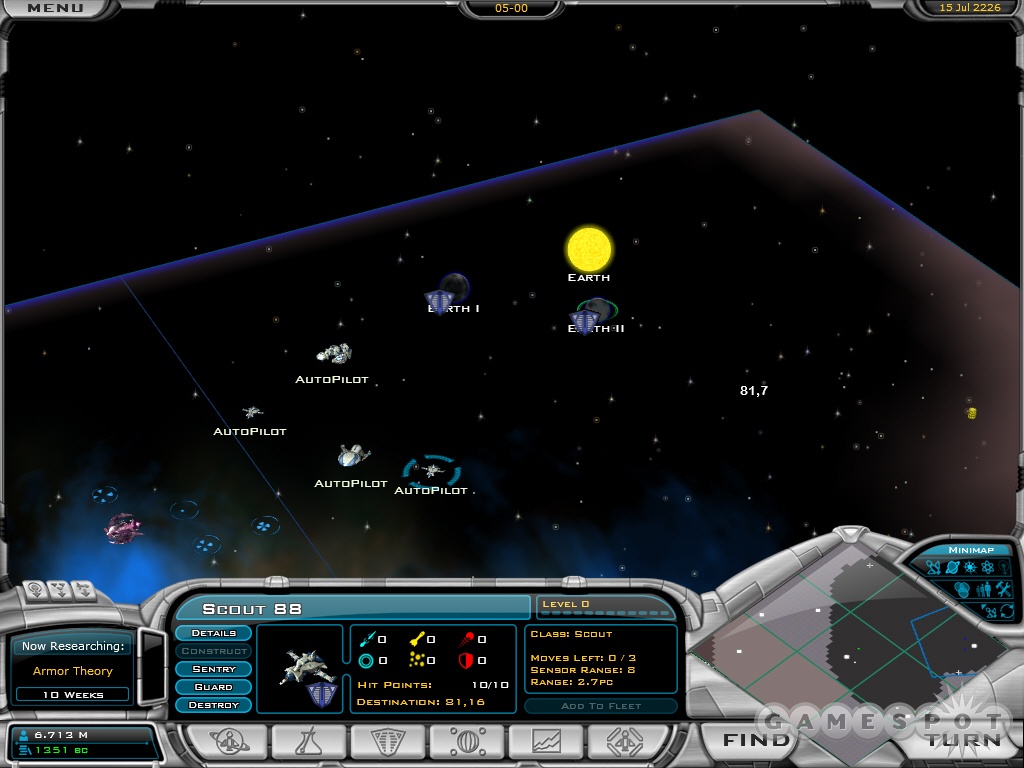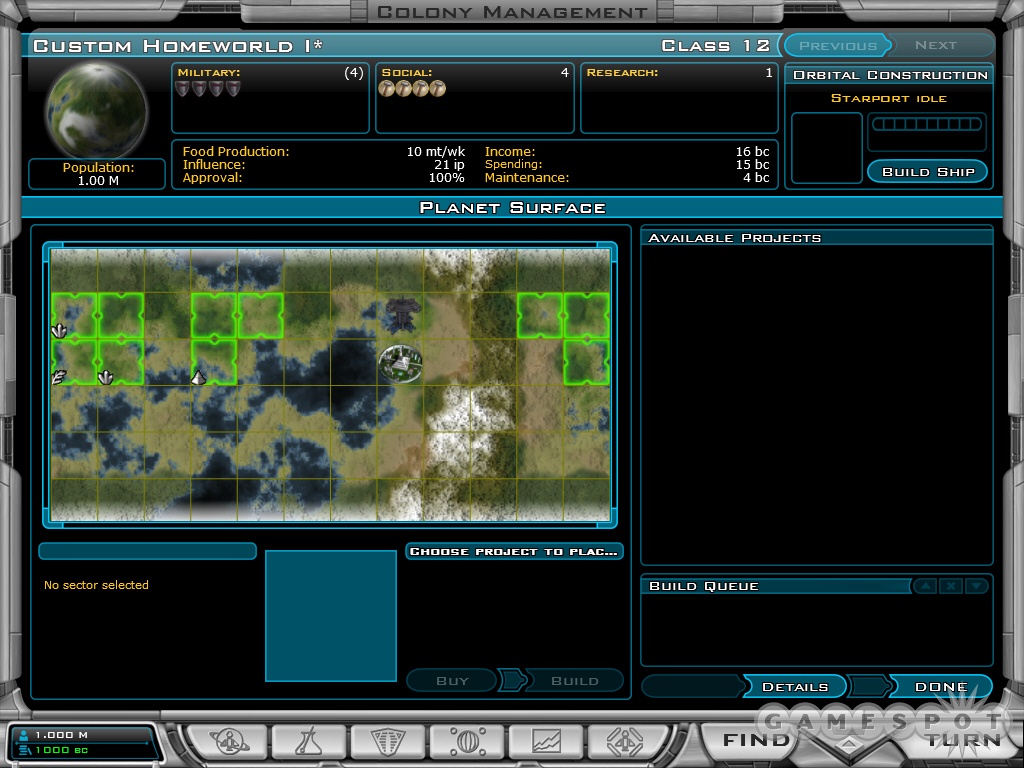Galactic Civilization II: Dread Lords Hands-On--Planets, Ship Design, and Empire Building
Dread Lords is finally beginning to look more like a game and less like a technological placeholder; we get our hands on the latest version to test it out.
Slowly but surely, Galactic Civilizations II: Dread Lords is coming together at last. We first saw the sequel to 2003's popular turn-based strategy game at the beginning of this year, but progress has been slow in coming. That has changed recently. We've gotten our hands on a third preview version of Dread Lords, and unlike the previous two versions of the game that we've played around with, this latest version actually feels more like a game and less like a technological placeholder of things to come.

In many ways, Galactic Civilizations is very similar to the classic space strategy game Master of Orion--and that's high praise, indeed. Your goal is to guide your species to galactic domination, which you do by colonizing star systems, researching technologies, building fearsome interstellar navies, and crushing anyone who gets in your way (at least, that's one path to victory). And Dread Lords is far more like Master of Orion than its predecessor. In the original Galactic Civilizations, you could only play as the human race. In Dread Lords, you can now play as any of the alien species in the game. And, in Master of Orion tradition, you can even create your own custom species, with your own unique racial abilities and technologies.
The first thing that you do when you start a game is to determine the type of galaxy you'll fight in. Galaxies come in varying sizes, ranging from tiny to gigantic, and this will determine the number of star systems (and correspondingly, planets that you can colonize). This will help determine the speed of the game; a small galaxy will lead to confrontation right away, while a larger galaxy will offer a slower pace because there's more time to explore and colonize before you have to fight. Other settings determine the number of habitable planets, the density (or distance) between stars, the number of asteroid fields and anomalies, and more. You can also tweak the victory conditions, and that determines the paths to, well, victory. The default victory conditions mean that you can win by researching the ultimate technology, creating a mighty alliance with other races, or overwhelming these races with your cultural supremacy.
After selecting your opponents, as well as their difficulty level, you'll drop in to the actual game; it's here where Galactic Civilizations II really differentiates from its predecessor. Yes, everything is now rendered in 3D (unlike the 2D graphics of the first game), but there have been a lot of other changes. For example, solar systems can now have multiple planets, meaning that different civilizations can colonize the same system. The galactic map dominates the screen, and you can zoom the view all the way in to focus on a solar system and then pull it all the way out until you see the entire galactic map. The galaxy itself is still a 2D plane, and anomalies still litter the space between the stars.
The entire planet system has been overhauled since the first game, adding a lot more complexity to the game as well as the potential for micromanagement. Essentially, planets are rated by "class," and the higher a planet's class, the more workable tiles are on its surface. The maximum "size" of a planet is 47, though most planets are rated far lower than that, and you'll need to research some advanced technologies that will let you terraform and unlock more tiles. At the beginning of the game, you'll have a handful of tiles available to you, and your first bit of business will be to put down research labs, factories, farms, spaceports, and more. Obviously, each facility you construct has a corresponding effect on a certain part of your empire. Invest early in research labs, and you'll advance more quickly up the technology tree. Dump your resources into factories, and you can build ships faster, among other things. Some tiles are better suited for certain industries than others, which is represented by a symbol on the tile. This also means that it's possible to create specialized planets, such as a "breadbasket" planet that supplies food, or a research planet that handles all your technological advances. And because space is at a premium, there's a very real sense of urgency early on to scout your neighboring star systems and colonize the best available planets.

Ship design is finally up and running in this version of the game, as well. Basically, you create your own vessels in the game, using the technology that you've researched to arm and equip them. Each race has a distinct visual style, and all you have to do is go into the spaceport, select a hull type, and attach engines, weapons, and more to various hard points on the hull. There's a weight limit that you need to stay aware of--you can't build an ubership immediately. Besides, the more expensive a ship, the longer it will take for your factories to crank it out--and at the beginning of a game, when your industrial capacity is very low, you just can't afford to churn out complex ships.
Before too long, we had built up a small interstellar empire by colonizing distant planets. However, the artificial intelligence has never been a slouch in Galactic Civilizations, and it appears that it's as sharp as ever in Dread Lords. On the default difficulty setting, we quickly found ourselves surrounded by the enemy, and eventually the neighbors came knocking with hostile fleets. In the next game, we dialed down the AI a level and still found the computer civilizations keeping pace with us. Still, we came away from Dread Lords feeling like it was a blend of the original Galactic Civilizations and Master of Orion II, and those are arguably two of the finest space strategy games ever made. That's good news for galactic emperor wannabes everywhere. Stardock aims to wrap up work on the game early next year, and it should be out during the first quarter of 2006.
Got a news tip or want to contact us directly? Email news@gamespot.com
Join the conversation